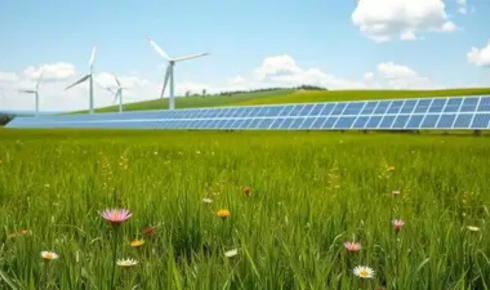
Renewable Mirror
What is Green Energy?
Green energy is an energy type generated from natural resources such as wind, sunlight, or water. It is mainly produced from renewable energy technologies such as geothermal energy, wind energy, biomass, and hydroelectric power. Green energy should not produce pollution as produced by energy from fossil fuels. Green energy sources are natural in contrast to fossil fuel sources like coal and natural gas.
You get complete information on green energy and its importance in a green energy magazine.
Why is Green Energy Important?
Green energy plays an important role in attaining environmental sustainability. It replaces the use of fossil fuels with alternative environmental-friendly or natural resources. Green energy is mainly clean and renewable with zero or no emissions of greenhouse gases as compared to fossil fuels. It emits lower levels of pollutants leading to lesser pollution and cleaner air.
Green energy is also important in creating employment opportunities and economic benefits. People get jobs in manufacturing and installing green energy sources such as solar panels and wind turbines. Renewable energy created around 11 million jobs globally in 2018 enhancing economic benefits and standards of living.
The infrastructure of green energy is based mainly on local sources like wind and solar which reduces its dependency on centralized sources making it more flexible. It also causes lesser disruption owing to sudden climate changes. Green energy is also a low-cost solution to energy needs in many regions in the world. The investment and development in green energy and green energy solutions is bringing down the overall energy costs making it cheaper as compared to rising prices of fossil fuels.
What are the forms of green energy?
1. Solar Power
Solar power is produced from photovoltaic cells by capturing and converting sunlight into electricity. Solar power is mainly used as a source of electricity to buildings, hospitals, and railway stations as well as cooking and lightning. Solar power has made use of electricity for domestic purposes easier and affordable.
2. Wind Power
Wind power uses flow of air at higher altitude sites to push turbines that generate electricity.
3. Hydropower
Hydropower or hydroelectric power uses flow of water in streams, rivers, or dams to generate electricity. Hydropower is also produced using flow of water at homes through pipes or from rainfall, or tides in the oceans.
4. Geothermal Energy
Geothermal energy uses thermal energy stored under the earth’s crust. However, this energy is still untapped but it is one of those renewable sources of energy that can reduce dependency on coal extensively.
5. Biomass
Biomass power plants use sawdust, wood waste, and combustible organic agricultural waste to produce energy. Though burning of these materials releases greenhouse gases, the emissions are lower than those produced from petroleum-based fuels.
Conclusion
Green energy is a cleaner and effective alternative to today’s energy sources that emit harmful air pollutants. Green energy sources are not only good for the environment but also create job opportunities making people economically stable. For more updates on energy, you can go through the green energy magazine of Renewable Mirror which is a leading website for all energy news and updates. So visit the site soon!






